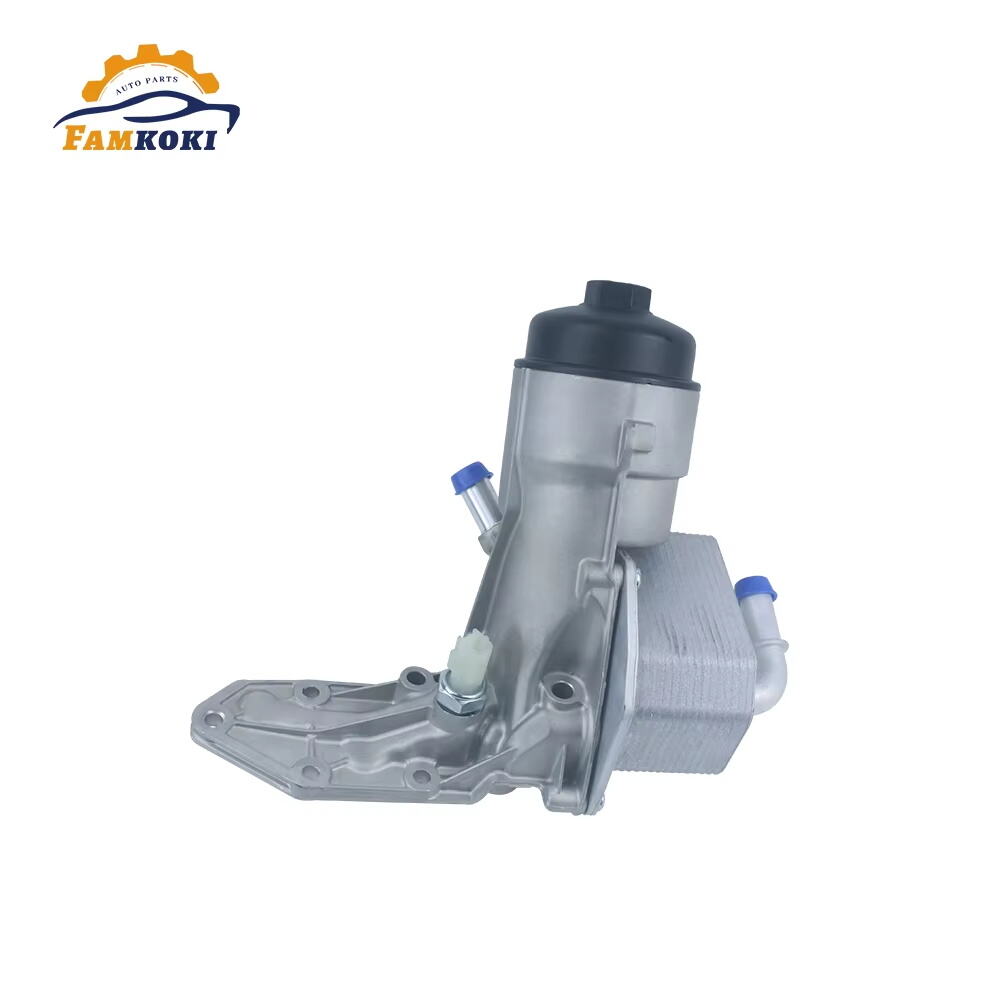Understanding the Role of Thermostats in Engine Efficiency
Why Engine Temperature Control Matters
Proper engine temperature control is crucial for optimal combustion and overall vehicle performance. Maintaining the engine within its ideal operating temperature range, typically between 190°F and 220°F, ensures efficient performance and longevity. When an engine overheats, it risks significant damage, leading to reduced efficiency and potential failure. This emphasizes the necessity of reliable thermostatic control. Automotive engineers design engines with distinct temperature thresholds to maximize efficiency. Research highlights that deviating from these settings can accelerate wear and increase failure rates, ultimately compromising the engine’s health and performance.
Impact on Fuel Economy and Emissions
Effective engine temperature management can enhance fuel economy by up to 10%, directly linking thermostat performance to reduced operational costs. When engines run at their design temperature, emissions control systems can function optimally, reducing harmful emissions and ensuring compliance with environmental regulations. Engines operating within this ideal range support better combustion reactions, which enhance fuel efficiency and minimize exhaust emissions. This alignment with modern automotive standards underscores the value of a properly functioning thermostat.
Preventing Overheating and Component Wear
Thermostats are essential for regulating coolant flow, preventing overheating, and protecting engine components from accelerated wear. According to a report from the Society of Automotive Engineers, maintaining effective temperature control extends the life of both engine oil and components, enhancing the overall reliability of the engine. Regular monitoring and maintenance of thermostatic systems are critical in minimizing the risk of overheating and related damage. This proactive approach to vehicle care ensures a longer lifespan and improved performance for the vehicle, safeguarding your investment in the long run.
Types of Thermostats for Engine Temperature Control
Mechanical Thermostats: Simplicity and Reliability
Mechanical thermostats are a popular choice for many vehicles due to their simplicity and reliability. Utilizing a wax pellet mechanism, they provide a cost-effective solution for temperature control without complex electronic components. This straightforward design allows them to be easily installed and minimizes potential electronic issues, ensuring dependable function over time. Automotive maintenance experts highlight that mechanical thermostats excel in scenarios where stable temperature regulation is crucial without the need for advanced features. They are particularly beneficial in applications where complexity must be minimized and reliability prioritized, proving their worth in different vehicle models.
Electronic Thermostats: Precision and Adaptability
Electronic thermostats provide greater precision and adaptability in managing engine temperatures, making them ideal for modern vehicles. These devices leverage data from adjacent systems to dynamically adjust the engine's performance for enhanced efficiency. Industry analysis suggests that electronic thermostats can respond more quickly to changes in engine load and temperature compared to mechanical alternatives. Their advanced features, such as feedback capabilities, are essential for optimizing performance and efficiency in contemporary engines. By offering precise control and rapid adaptability, electronic thermostats ensure that vehicles operate efficiently under varying conditions.
Smart Thermostats: Advanced Temperature Management
Smart thermostats represent the forefront of temperature management technology, incorporating IoT connectivity for real-time data and remote control functionalities. This allows drivers to proactively monitor and adjust engine temperatures, reducing the risk of overheating. Designed to seamlessly communicate with other vehicle systems, smart thermostats enhance overall vehicle management. Despite a higher initial cost, these devices offer significant benefits in fuel savings and improved engine performance, making them an attractive investment for performance vehicles. The integration of advanced technology aims to optimize engine efficiency, showcasing the potential of smart thermostats to revolutionize vehicle temperature control.
Key Features of the Best Engine Thermostats
Temperature Accuracy and Response Time
The best engine thermostats are characterized by their high temperature accuracy, which is crucial for maintaining the engine's efficiency. They ensure that the engine operates within its optimal temperature range, avoiding conditions that might lead to overheating or inefficient fuel consumption. Automotive technology reviews highlight the importance of a fast response time, which allows an engine to adapt quickly to sudden changes in operating conditions. This rapid adaptability helps prevent engine performance issues and enhance fuel efficiency, as studies suggest that even minor temperature variances can significantly impact engine performance.
Durability in Extreme Conditions
Durability is a vital feature for thermostats, given their exposure to extreme temperatures and pressures in engine environments. The best thermostats are engineered to last in these harsh conditions, ensuring longevity and reliable performance. High-performance thermostats often incorporate materials like silicone and advanced polymers, which improve resistance to corrosion and thermal fatigue. According to materials science studies, these robust construction materials enable thermostats to withstand prolonged operational stresses, particularly important in commercial vehicles that demand heavy-duty applications.
Compatibility with Engine Specifications
Selecting a thermostat that is compatible with specific engine designs is crucial to ensuring correct performance and avoiding failures. The best engine thermostats are designed to meet OEM specifications, as recommended by numerous manufacturers, which enhances their reliability and functionality. Proper fitment not only guarantees effective performance but also simplifies the installation process. This alignment reduces labor costs and addresses potential issues during vehicle operation, making it an essential consideration when replacing or upgrading engine thermostats.
Installation Guidelines for Optimal Performance
Proper Placement and Sealing
Proper placement of the thermostat is essential for effective temperature regulation in an engine. Installation manuals typically provide specific locations for different vehicle models to ensure the thermostat functions optimally. An improperly placed thermostat can lead to inefficient cooling and potential engine overheating. Furthermore, ensuring a proper seal during installation prevents leaks, which are critical to maintaining coolant levels. Such leaks could lead to overheating issues, which are preventable by adhering to best practices outlined in automotive maintenance guides. Using the correct gasket materials is also vital; these materials help enhance sealing performance and ensure the thermostat's longevity.
Avoiding Common Installation Mistakes
Avoiding common installation mistakes is pivotal in ensuring the longevity and performance of engine thermostats. Errors such as overtightening or using incorrect gaskets frequently lead to premature thermostat failures and coolant leaks. Consulting expert resources before starting the installation can be invaluable. These resources often include step-by-step instructions that highlight potential pitfalls and provide a comprehensive guide to prevent mishaps. Paying attention to every detail during installation not only prevents significant issues down the road but also ensures the thermostat functions at its optimal capacity over time.
When to Seek Professional Help
While many individuals can handle thermostat replacement, certain cases necessitate professional help, especially when dealing with integrated coolant systems or complex engine models. Recognizing personal skill limitations is essential, as complexities can lead to inefficiencies or even further damage if not properly managed. If signs of operating failure occur, such as erratic temperature readings during testing, it is crucial to seek immediate consultation with an experienced automotive technician. This proactive approach prevents potential damage and ensures the engine operates efficiently with the new thermostat.
Maintenance Tips to Extend Thermostat Lifespan
Regular Inspection for Corrosion or Damage
Regular inspections of thermostats are essential to detect early signs of corrosion or physical damage. Such proactive measures can prevent more costly repairs in the long run. Experts in the automotive industry recommend scheduling visual inspections during regular maintenance visits, particularly for older vehicles or those exposed to extreme weather conditions. Keeping a maintenance log can help track any damage and anticipate when thermostat replacements are necessary, ensuring your vehicle remains in optimal condition.
Cleaning and Calibration Techniques
Effective cleaning techniques play a crucial role in preventing buildup that can inhibit thermostat performance and affect temperature regulation. For advanced electronic models, calibrating thermostats can offer increased precision, enhancing engine management. To ensure best practices, consult manufacturer specifications, which provide valuable guidance in maintaining and extending the lifespan of your thermostat. Adhering to these cleaning and calibration techniques aligns with industry standards and maximizes thermostat efficiency.
Signs It’s Time for a Replacement
Recognizing signs of potential thermostat failure is vital to avoiding significant engine problems. Symptoms such as frequent overheating, irregular temperature readings, or persistent coolant leaks indicate that a replacement may be necessary. Automotive engineers note that extreme temperature readings signal immediate attention, which could prevent a complete failure. Staying informed about these warning signs enables vehicle operators to execute strategic repairs or replacements when needed, maintaining the vehicle’s health and performance.
Frequently Asked Questions (FAQ)
Why is engine temperature control important?
Engine temperature control is crucial for maintaining optimal combustion, enhancing fuel efficiency, and ensuring long-term engine health.
What are the benefits of using an electronic thermostat over a mechanical one?
Electronic thermostats offer greater precision, adaptability, and rapid response to changing conditions, making them suitable for modern engines.
How does a malfunctioning thermostat affect fuel economy?
A malfunctioning thermostat can result in inefficient engine operation and increased fuel consumption, harming fuel economy.
When should I seek professional help for thermostat installation?
Seek professional help if dealing with complex engine models or integrated coolant systems, or if you experience erratic temperature readings after installation.
What are the common signs indicating thermostat replacement is necessary?
Common signs include frequent overheating, irregular temperature readings, and persistent coolant leaks.
Table of Contents
- Understanding the Role of Thermostats in Engine Efficiency
- Types of Thermostats for Engine Temperature Control
- Key Features of the Best Engine Thermostats
- Installation Guidelines for Optimal Performance
- Maintenance Tips to Extend Thermostat Lifespan
-
Frequently Asked Questions (FAQ)
- Why is engine temperature control important?
- What are the benefits of using an electronic thermostat over a mechanical one?
- How does a malfunctioning thermostat affect fuel economy?
- When should I seek professional help for thermostat installation?
- What are the common signs indicating thermostat replacement is necessary?
 EN
EN
 AR
AR
 FR
FR
 KO
KO
 PT
PT
 RU
RU
 ES
ES


